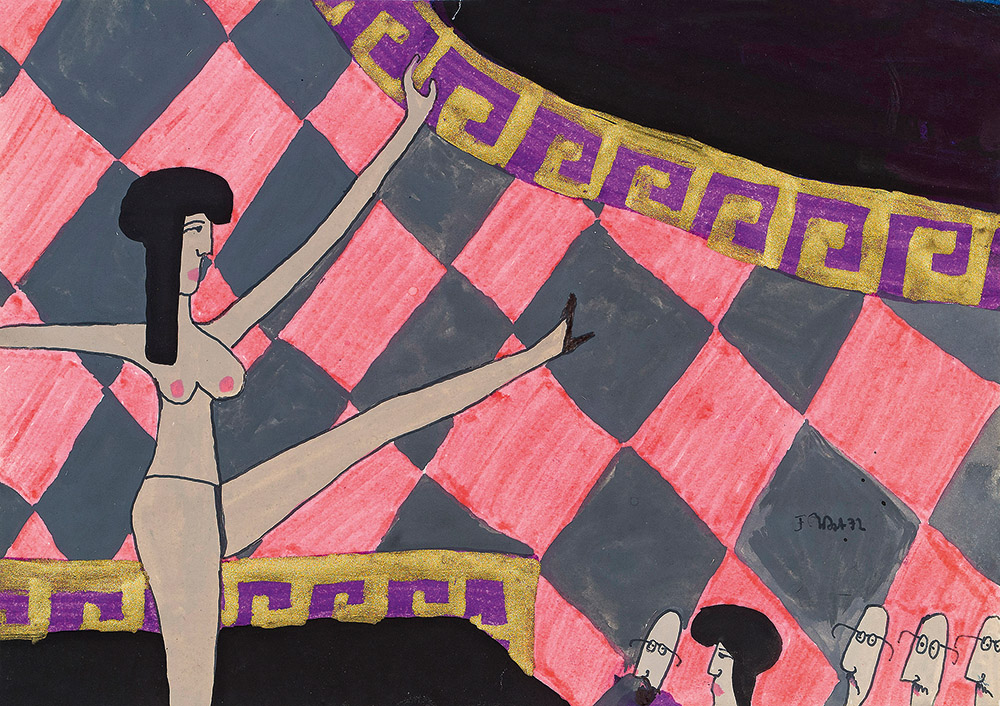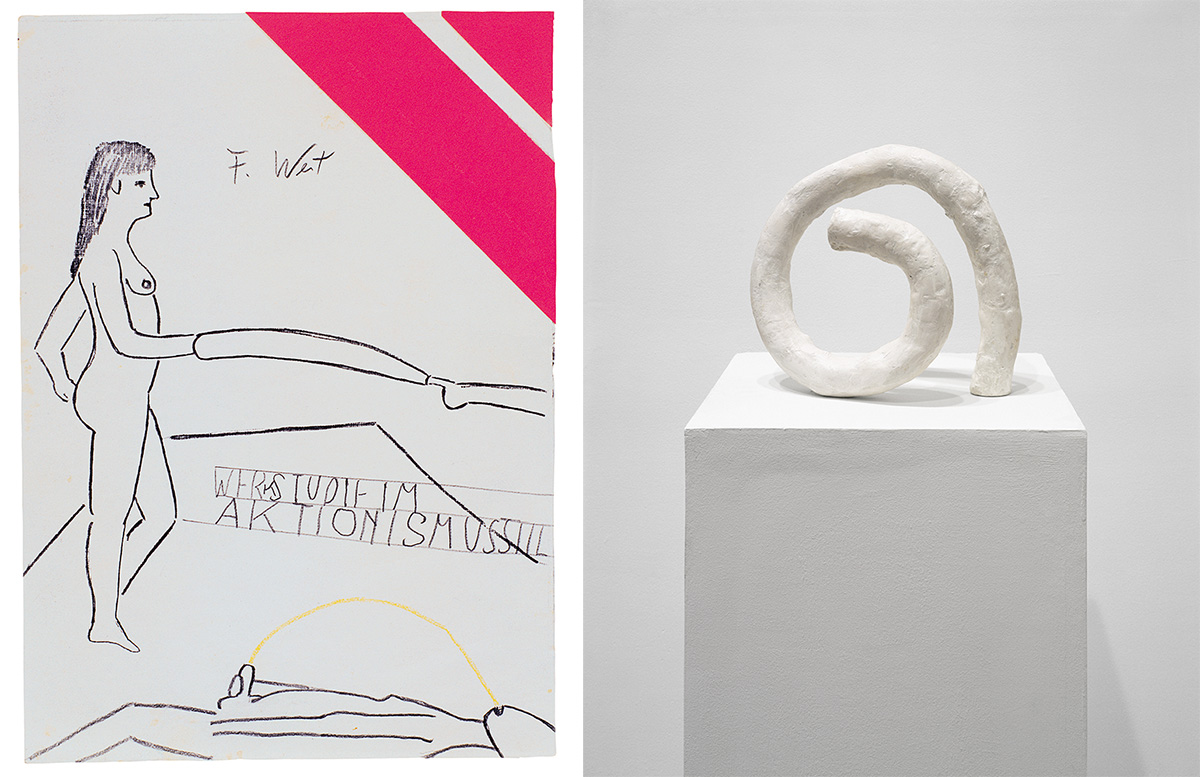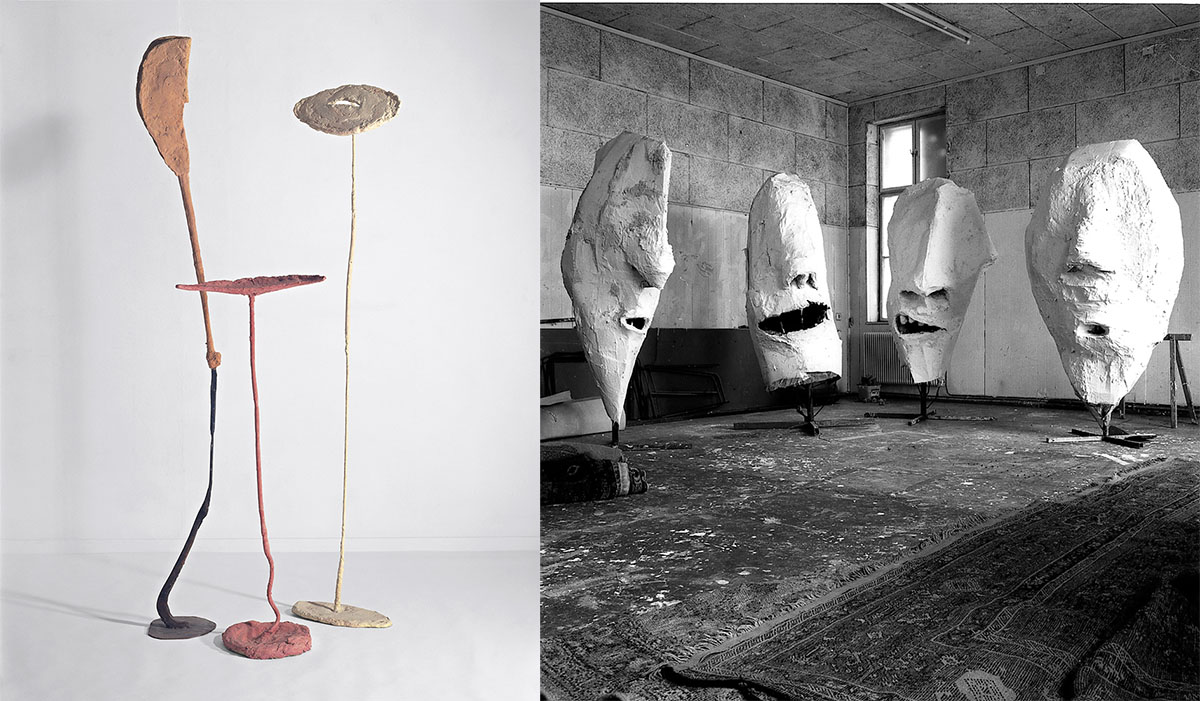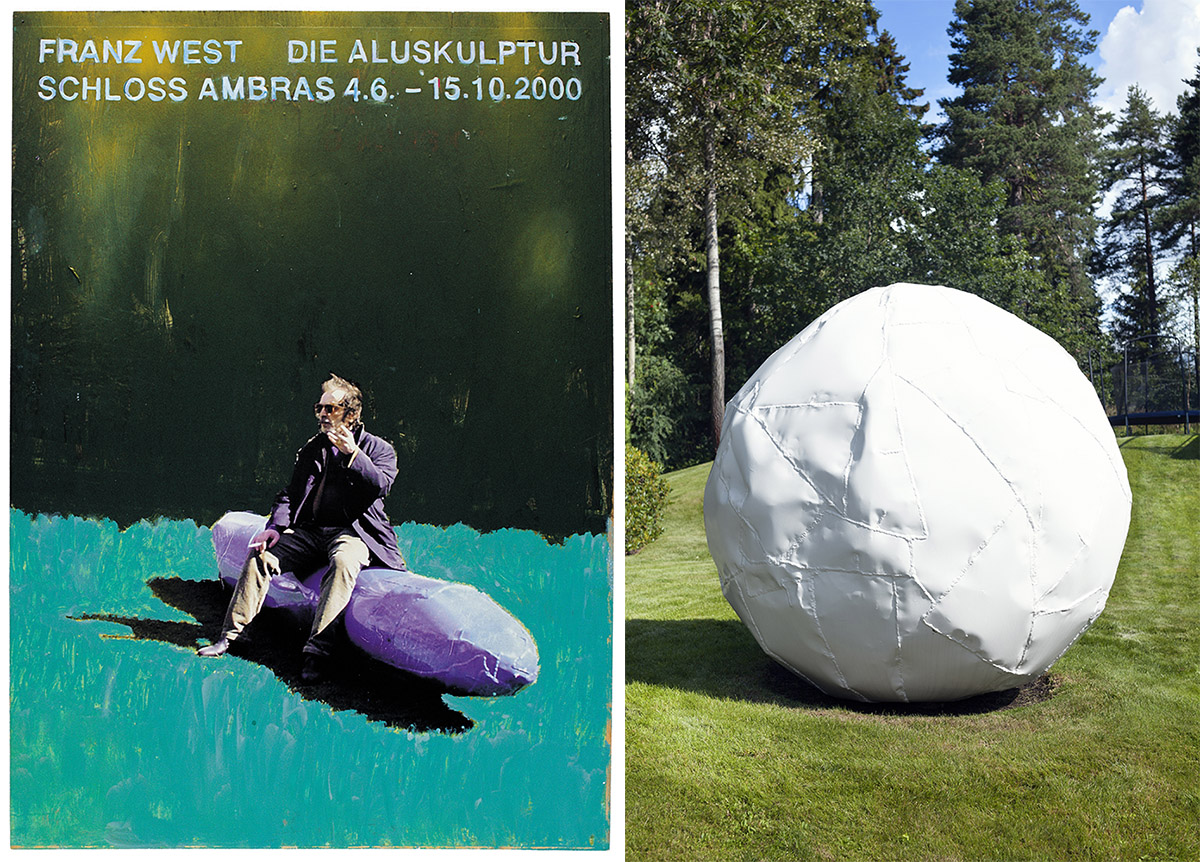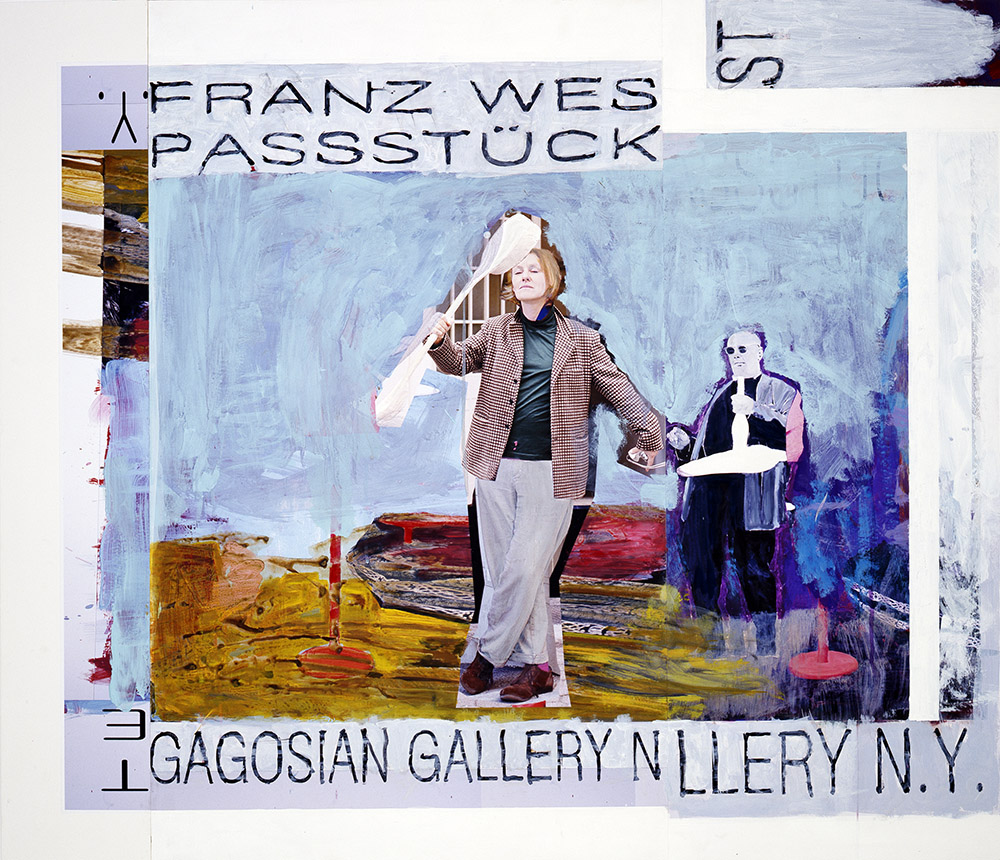ART-PRESENTATION: Franz West-Retrospective,Part II
 Throughout his career, Franz West manipulated everyday materials and imagery in order to examine art’s relation to life and collective experience. From collages and interactive sculptures to tables, seating, and large abstract forms, his works focus on the tensions between public and private, considering the controlled behaviors and impulsive actions of the body (Part I).
Throughout his career, Franz West manipulated everyday materials and imagery in order to examine art’s relation to life and collective experience. From collages and interactive sculptures to tables, seating, and large abstract forms, his works focus on the tensions between public and private, considering the controlled behaviors and impulsive actions of the body (Part I).
By Efi Michalarou
Photo: Centre Pompidou Archive
Franz West, one of the key figures of the international art scene, was first influenced by the generation of Actionists and Performance artists of the sixties. His early sculptures became the foundation of his practice. In the eighties, some of these sculptures, redeveloped on a large scale, exploring the relation to the body as well as to social issues. Including almost 200 artworks the Centre Pompidou presents the biggest ever retrospective of the work of Franz West that highlights not only the artist’s capacity for formal invention, but also his irreverent and caustic sensibility. The exhibition includes several collages, wherein West selectively painted over images, isolating people and objects from their contexts in order to underscore the staged, discordant relationships between them. A group of intimate ink drawings and collages from the early 1970s reflects West’s Viennese roots and his ability to depict and subvert sexuality in its public form. Merging the mundane and the mystical, the public and the private, West’s work introduces combinations and revisions that continue to unfold in the space between the real and the imagined. While the early plaster sculptures, “Paßstücke” (Adaptives), were made to be moved, touched, and handled—transforming viewers into participants, later works incorporate more fragile materials, such as papier-mâché and glass bottles, which he combined in the “Labstücke” (Refresher Pieces) from the early 1980s. In 1986, West reversed the impetus behind his earlier sculpture, creating static works that maintain a sense of fragility and flux, eschewing the idea that sculpture is a fixed, permanent entity detached from the viewer’s world. “Untitled (Triangolo n.1)” (1988), a white, diamond-like sculpture, is displayed on a metal stand like a rare, distorted jewel; and “Skeptik” (1987) is comprised of brown paper interspersed with gray, black, and peach pigments, resembling a chunk of marbled earth. West often invited other artists to contribute to his work, as in the untitled sculptures painted by Herbert Brandl: a long blue spike with a pointed top, and a textured magenta square. Color continues to intensify in West’s later work; “Sisyphos VIII” (2002), a mottled mass of papier-mâché, Styrofoam, and cardboard, is elegantly spackled with bright blues and yellows. Also on show are West’s “Lemurenköpfe”, the collages and drawings of his later years, as well as models for open-air works and a selection of such sculptures, in addition to his furniture works, such as chairs and sofas. These are installed in the Forum at the Centre Pompidou and at a number of museums and organizations in the Marais. Redefining sculpture in its relation to the body, the verbal and the viewer, he succeeded in creating an entirely original aesthetic. Anticipating the “trash” aesthetic of the 1990s, he constantly inverted the categories of the beautiful and the ugly, the repulsive and the seductive. More than anyone else, West redefined the notions of authorship and collaboration between artists, from visual artists to writers or musicians. The exhibition also considers West’s passion for music and the importance of philosophy and psychoanalysis for him, especially through the legacy of Ludwig Wittgenstein and Sigmund Freud. Shown at the entrance to Galerie 2, the installation “Auditorium”, was first created for Kassel’s documenta 9, and an allusion to Freud’s psychoanalysis couch, it will host to a program of performances and discussions
Info: Curators: Christine Macel and Mark Godfrey, Assistant Curators: Loïc Le Gall, Luise and Monika Bayer-Wermuth, Centre Pompidou, Place Georges-Pompidou, Paris, Duration: 12/9-10/12/18, Days & Hours: Mon & Wed-Sun 11:00-21:00, www.centrepompidou.fr

